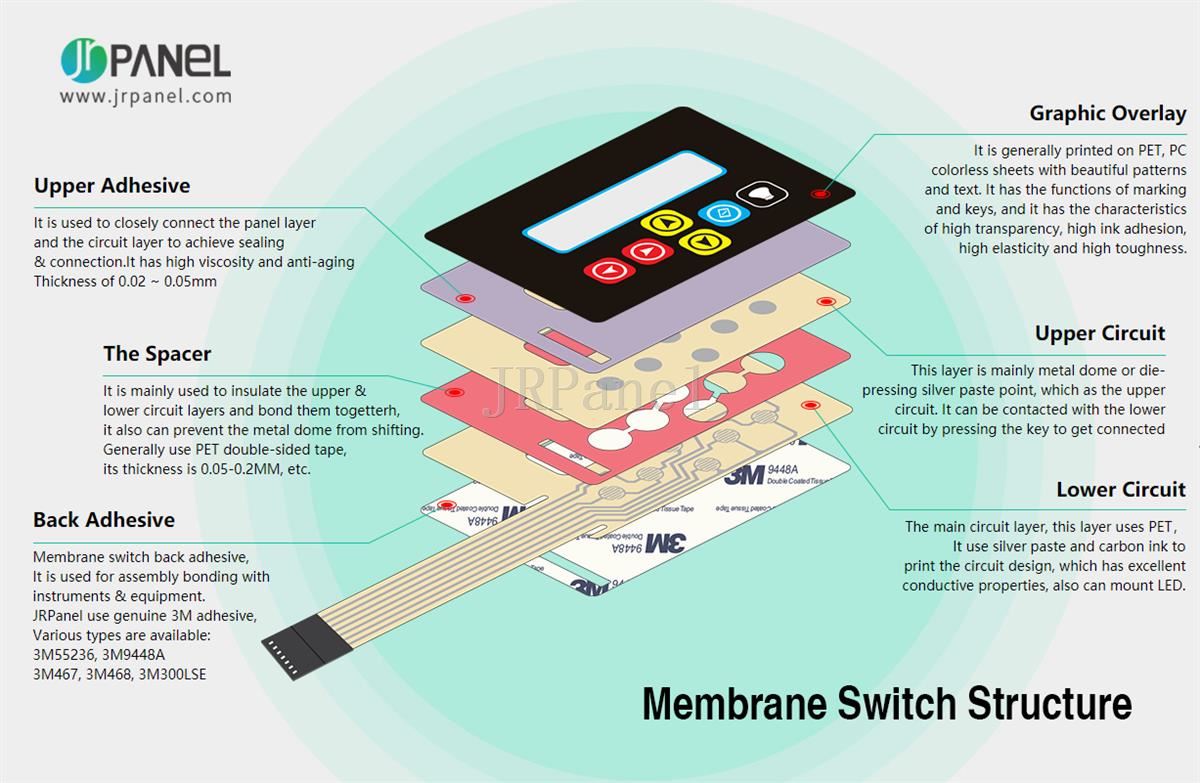Cutting-edge trends in membrane switch development
Recognizing the Importance of Membrane Switch Over in Modern Electronic Devices
Membrane layer buttons are integral components in contemporary electronic devices. They use a blend of capability and layout that enhances individual interaction. Their long lasting and lightweight nature makes them ideal for different applications. As industries advance, the need for customization and progressed attributes expands. Comprehending how membrane layer switches over add to technology discloses their importance in shaping the future of electronics. What exists in advance for this modern technology?
The Basics of Membrane Layer Switch Over Technology
Commonly neglected, membrane layer switch modern technology plays an important duty in the contemporary electronic devices landscape. These devices, made up of multiple layers, function as customer interfaces for numerous digital products, varying from household appliances to clinical devices. A regular membrane switch includes a graphic overlay, a spacer layer, and a circuit layer, which are thoroughly assembled to produce a useful interface.When stress is applied to the overlay, the circuit layer is finished, permitting signals to be transmitted to the gadget. This modern technology is recognized for its adaptability, making it possible for customization in shape, functionality, and design to satisfy details user needs. Additionally, membrane buttons are lightweight and slim, making them suitable for applications where space is a costs. Their toughness and resistance to environmental elements additionally boost their charm, guaranteeing they can stand up to severe conditions while preserving functionality. Generally, membrane switch technology is indispensable to creating user-friendly and effective digital tools

Trick Advantages of Membrane Changes
Membrane layer switches deal a number of vital benefits that make them a preferred selection in different digital applications. Their design enables for a compact form aspect, enabling manufacturers to develop lightweight and streamlined gadgets. Furthermore, membrane layer switches are resistant to dust, moisture, and chemicals, which boosts their sturdiness and durability in demanding settings. The responsive comments supplied by these switches can boost user experience, making them simple and instinctive to operate.Furthermore, membrane buttons can be personalized with diverse graphics and shades, permitting one-of-a-kind branding possibilities. The manufacturing procedure is generally cost-effective, particularly for high-volume production, as it lowers setting up time and streamlines layout. Finally, membrane switches over need minimal maintenance, adding to reduced general operational costs. These benefits highlight their growing popularity in modern-day electronic devices, where reliability and straightforward interfaces are necessary.

Applications Across Various Industries
The versatility of membrane layer switches enables their prevalent adoption throughout different industries. In the medical area, they are frequently made use of in diagnostic tools and individual monitoring systems, providing a durable user interface resistant to contaminants. The automobile sector makes use of membrane layer switches for control panel controls, enhancing user experience with sleek designs that hold up against severe conditions. In consumer electronic devices, they serve as control panels for devices such as microwaves and coffee manufacturers, providing an easy to use interface that is easy to tidy. The aerospace market uses membrane layer switches in cockpit controls, where integrity and space performance are vital. Additionally, the commercial field leverages these switches in equipment and control systems to guarantee robust procedure sought after settings. This wide variety of applications underscores the adaptability of membrane switches, making them essential elements in boosting functionality and customer interaction throughout diverse technical landscapes.
Modification and Design Adaptability

Future Patterns in Membrane Change Advancement
Emerging trends in membrane layer switch growth indicate an expanding emphasis on boosted performance and combination with smart innovations. As customer need for extra sophisticated digital tools rises, producers are concentrating on developing membrane layer switches over that not just offer fundamental operational functions however likewise incorporate attributes like touch sensitivity, backlighting, and haptic feedback.Furthermore, developments in materials are expected to you could try here enhance durability and ecological resistance, making membrane layer changes suitable for varied applications in sectors such as medical care, auto, and consumer electronic devices. The assimilation of capacitive touch modern technology is likely to come to be much more prevalent, permitting sleeker designs and boosted individual interfaces. membrane switch.Additionally, the rise of the Web of Things (IoT) is motivating the development of membrane layer switches over that can connect wirelessly look at this website with various other gadgets, improving interconnectivity. On the whole, the future of membrane button modern technology shows up promising, driven by advancement and the pursuit of easy to use services
Often Asked Questions
Just How Do Membrane Layer Switches Contrast to Standard Mechanical Switches?
Membrane switches, being more space-efficient and providing a sleek layout, contrast with traditional mechanical switches that supply responsive feedback. The previous usually include personalized graphics, while the last commonly assure sturdiness and dependability in various applications.
What Products Are Generally Used in Membrane Layer Switch Over Manufacturing?
Membrane layer switches are typically created using materials such as polyester, polycarbonate, and printed conductive inks. These materials provide responsiveness, resilience, and flexibility, making them suitable for numerous applications in digital tools and interface.
Can Membrane Layer Changes Be Repaired or Recycled?
Membrane layer switches can usually be fixed, particularly if minor concerns emerge, such as sticky failure or surface damages. Total reuse is normally limited due to wear and prospective degradation of products over time.
How Do Environmental Variables Affect Membrane Change Efficiency?
Environmental variables, such as temperature level, moisture, and direct exposure to chemicals, greatly influence membrane button performance. Severe problems can cause degradation, affecting responsiveness and longevity, eventually compromising the functionality of the device in different applications.
What Is the Regular Lifespan of a Membrane Layer Switch over?
The regular life-span of a membrane layer button usually ranges from 1 to 5 million actuations, depending on elements such as usage frequency, environmental conditions, and the materials utilized in manufacturing, influencing durability and performance longevity. A typical membrane switch is composed of a graphic overlay, a spacer layer, and a circuit layer, which are diligently constructed to develop a functional interface - membrane switch.When pressure is applied to the overlay, the circuit layer is completed, allowing signals to be transmitted to the gadget. The tactile comments offered by these buttons can enhance individual experience, making them very easy and intuitive to operate.Furthermore, membrane switches can be tailored with diverse graphics and shades, enabling for one-of-a-kind branding possibilities. As customer demand for much more innovative electronic gadgets rises, manufacturers are focusing on creating membrane layer her comment is here switches over that not just offer standard operational duties but also incorporate functions like touch level of sensitivity, backlighting, and haptic feedback.Furthermore, improvements in materials are expected to improve resilience and ecological resistance, making membrane switches over appropriate for diverse applications in sectors such as healthcare, automotive, and consumer electronic devices. The assimilation of capacitive touch technology is likely to come to be a lot more prevalent, enabling for sleeker designs and improved individual interfaces.Additionally, the increase of the Web of Points (IoT) is prompting the development of membrane switches over that can interact wirelessly with other gadgets, enhancing interconnectivity. Membrane buttons, being extra space-efficient and using a sleek style, contrast with traditional mechanical switches that offer responsive feedback